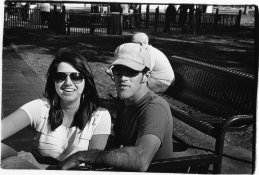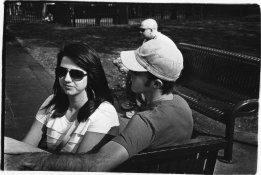pstake
Subscriber
- Joined
- May 5, 2005
- Messages
- 728
- Format
- Multi Format
After years of shooting with SLRs, I got bit by the rangefinder bug. Started with a Contax IIa with the F2 Sonnar and ended with that plus a Retina IIIc, F2 Xenon; Walz Envoy 35; Karat 36, F2 Heligon; and a Kiev IIa with what could be its original Jupiter-8 (both 1956.)
They all have their charms but the Contax and Kiev are the most fun.
The problem is: I have yet to master framing on a rangefinder after all those years of seeing exactly what the film sees. Some of these cameras seem to be closer to correct than others, in particular the IIa and the Walz. Not sure why ... but the Walz does have a frame line.
I'm thinking that has something to do with this so-called "parallax correction."
I've googled that term a few times and still don't have a solid understanding of what it is.
Here are two recent prints from negatives made with the Kiev IIa and Jupiter-8 ... they clearly show my folly in framing.
Any info about parallax correction, or tips / rules-of-thumb about adjusting the frame to correct for the difference between the viewfinder and the lens, is appreciated!
Cheers,
Phil
ps. you should all go buy the SLRs i have listed in the classifieds. I'll make you a deal on both! After my rangefinder binge, I need to thin the SLR herd.

As you can see, I cut off their hands. My original framing included their hand and moved their faces farther right.

They all have their charms but the Contax and Kiev are the most fun.
The problem is: I have yet to master framing on a rangefinder after all those years of seeing exactly what the film sees. Some of these cameras seem to be closer to correct than others, in particular the IIa and the Walz. Not sure why ... but the Walz does have a frame line.
I'm thinking that has something to do with this so-called "parallax correction."
I've googled that term a few times and still don't have a solid understanding of what it is.
Here are two recent prints from negatives made with the Kiev IIa and Jupiter-8 ... they clearly show my folly in framing.
Any info about parallax correction, or tips / rules-of-thumb about adjusting the frame to correct for the difference between the viewfinder and the lens, is appreciated!
Cheers,
Phil
ps. you should all go buy the SLRs i have listed in the classifieds. I'll make you a deal on both! After my rangefinder binge, I need to thin the SLR herd.

As you can see, I cut off their hands. My original framing included their hand and moved their faces farther right.




